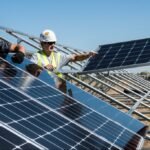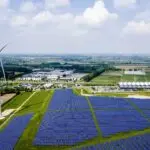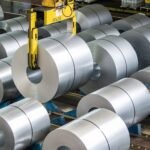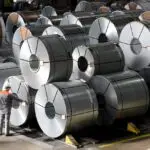In today’s energy-intensive industrial landscape, forward-thinking companies are no longer asking if they should invest in solar—they’re asking how fast they can scale. With rising energy costs and growing sustainability mandates, scaling industrial solar panel systems is no longer a luxury—it’s a competitive necessity.
The Secret to Scaling Your Industrial Solar Panel System for Growth
At Steelbridge Export, we’ve supported manufacturers, logistics hubs, and infrastructure developers across the Middle East and Africa to design and expand large-scale photovoltaic (PV) systems. And through this experience, we’ve seen what works—and what doesn’t—when scaling solar.
If you’re considering expanding your solar footprint across multiple rooftops, facilities, or even entire industrial zones, here’s what you must know to succeed.
Understand the Local Climate Impact: PV Thermal Coefficient in Desert Regions
Scaling in the Middle East or North Africa requires one critical consideration above all: PV thermal coefficient impact in desert regions. Simply put, high ambient temperatures reduce panel efficiency. And in desert climates where temperatures can soar beyond 45°C, thermal derating becomes a serious challenge.
For instance, a solar panel with a thermal coefficient of -0.4%/°C will lose 0.4% efficiency for every degree above 25°C. In Gulf nations, this could mean daily losses of 10–15% during peak summer.
To mitigate this:
-
Use modules specifically rated for high-temperature tolerance
-
Implement smart inverters and active monitoring systems
-
Design for airflow beneath panels for passive cooling
Ignoring the PV thermal coefficient impact in desert regions will cripple your ROI—even with high solar irradiance.

Plan for Grid and Load Integration from Day One
One common mistake in scaling industrial solar panel systems is underestimating the complexity of energy management. It’s not just about adding panels; it’s about integrating them with your load profile and local grid regulations.
When planning your system, account for:
-
Time-of-use tariffs
-
Peak shaving opportunities
-
Net metering policies
-
Battery storage compatibility
In the Middle East, some industrial zones now offer turnkey solar plant contracts that include battery storage and AI-powered load management. These aren’t just upsells—they’re the foundation for future-proofing your investment.
Why the Middle East Is Ideal for Industrial Solar Investment
The Middle East solar investment landscape is booming for several reasons:
-
High solar irradiation: GCC countries enjoy over 3,000 hours of sunshine annually
-
Government incentives: Tax exemptions, feed-in tariffs, and green financing
-
Strategic energy goals: UAE’s Energy Strategy 2050 and Saudi Arabia’s Vision 2030 both prioritize renewables
For investors and industrial operators, this creates an ideal environment to scale without relying solely on state grids. Countries like Jordan, Egypt, and Oman have also eased industrial PPA regulations, making solar panels investment more attractive than ever.
Think Modular, Not Just Big
One of the keys to successfully scaling industrial solar panel systems is modularity. Building a solar megaproject in one go can be capital-intensive and operationally risky. A better approach is to:
-
Start with a core PV system designed for expansion
-
Use standardized mounting and electrical infrastructure
-
Build in battery storage capacity from the beginning
This modular mindset allows you to grow in phases based on demand, budget, or policy changes—without needing a full redesign each time.
 Financing Options: Own, Lease, or Partner?
Financing Options: Own, Lease, or Partner?
Scaling means cost. But the good news is that turnkey solar plant contracts in the Middle East often include creative financing models. These include:
-
Leasing or power purchase agreements (PPAs): You get the energy savings without owning the asset
-
Green loans and ESG-linked funding: Ideal for corporates looking to improve sustainability scores
-
Joint ventures with EPC partners: Share capital risk in exchange for long-term O&M commitments
Whether you’re building a 500 kW rooftop system or a 10 MW ground-mounted solar farm, finance will shape your scaling strategy.
Don’t Underestimate Operations & Maintenance (O&M)
As systems scale, so do O&M complexities. If you’re operating in sandy, hot regions like Saudi Arabia or UAE, expect:
-
Frequent panel cleaning: Dust accumulation can reduce performance by 20–30%
-
Inverter failures due to thermal stress
-
Cable degradation from UV exposure
Invest in predictive maintenance tools, sensor-based cleaning tech, and dedicated O&M teams. For regional installations, partner with EPCs offering service contracts with uptime guarantees.
Proper O&M isn’t just about fixing problems—it’s about preserving long-term performance for your entire solar asset portfolio.
Future-Proofing Through Digitalization
Scaling solar today means embracing smart tech. From AI-driven monitoring systems to blockchain-secured power metering, digital tools enhance scalability in big ways.
-
Remote diagnostics: Cut downtime through real-time fault detection
-
Energy analytics: Predict and optimize performance across multi-site deployments
-
IoT and SCADA integration: Essential for utility-scale projects
In a region where sandstorms and high humidity are regular threats, digitalization ensures reliability and performance—two key factors in any solar panels investment strategy.
 Real-World Example: How One Steel Plant Scaled from 2 MW to 12 MW
Real-World Example: How One Steel Plant Scaled from 2 MW to 12 MW
A leading steel plant in the UAE began with a modest 2 MW rooftop system. Working with Steelbridge Export, they used a modular design that allowed for expansion every 18 months. Today, they operate a 12 MW PV system with:
-
98% uptime over 3 years
-
24/7 remote monitoring
-
Integrated battery storage for night operations
Their strategy proves that scaling industrial solar panel systems can be seamless—with the right technology, partners, and planning.
Final Thoughts: Scale Intelligently, Not Just Rapidly
Scaling industrial solar panel systems isn’t about installing the most panels—it’s about doing it intelligently, sustainably, and profitably. From thermal considerations in the desert to integration with the power grid, each decision matters.
The Middle East is uniquely positioned for solar growth, with its abundant sunlight, ambitious energy goals, and increasing industrial demand. But to scale successfully, you need to blend engineering, policy awareness, and smart finance.
Whether you’re a manufacturer, logistic company, or government-backed utility, the path to energy independence and efficiency lies in smart solar scaling. And if you’re ready to begin, you already have the sun on your side.
– epc.com


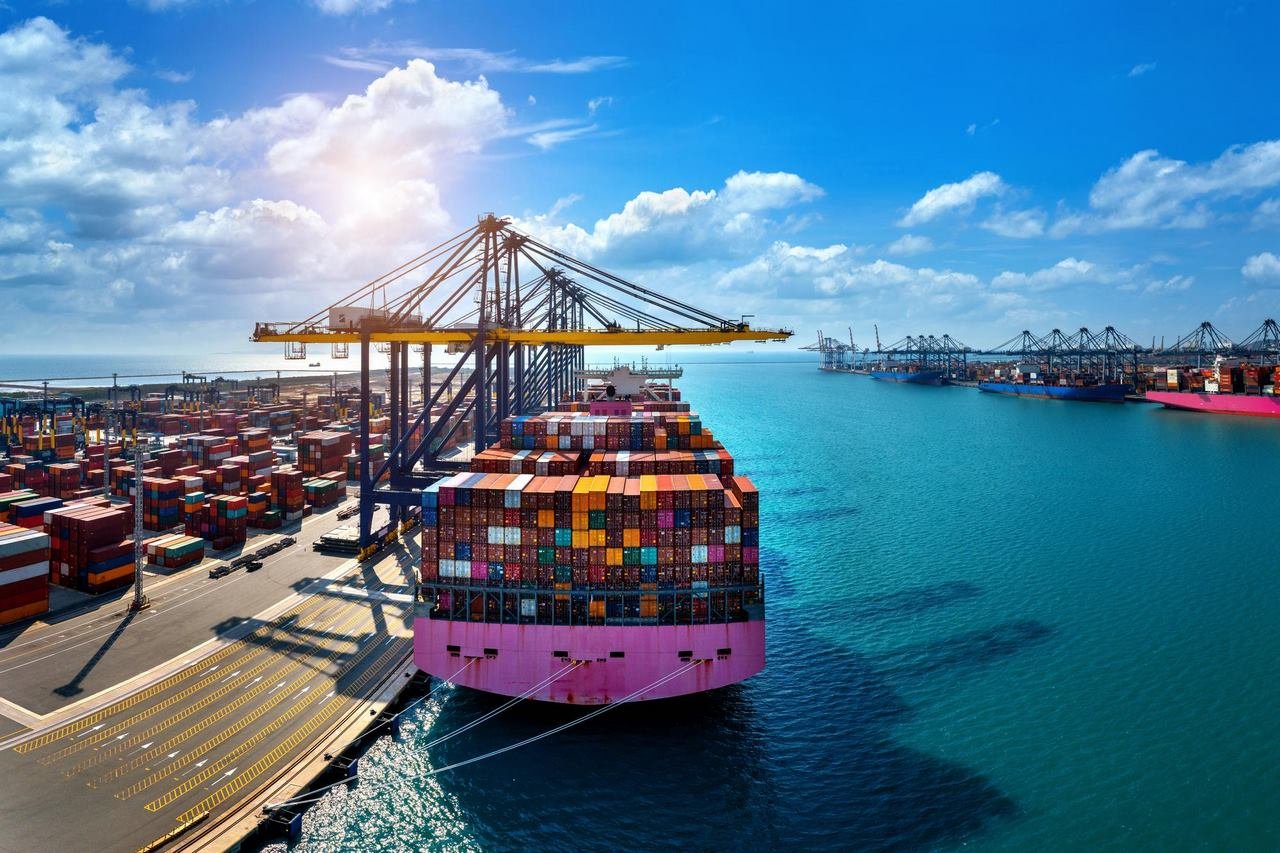

 Financing Options: Own, Lease, or Partner?
Financing Options: Own, Lease, or Partner? Real-World Example: How One Steel Plant Scaled from 2 MW to 12 MW
Real-World Example: How One Steel Plant Scaled from 2 MW to 12 MW